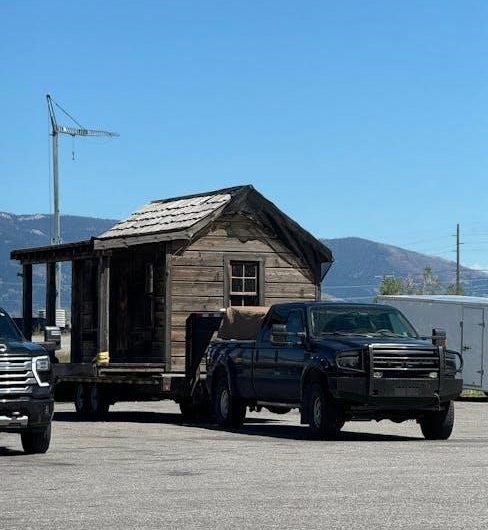
Finding the right skateboard size is crucial for a comfortable and controlled ride. This guide helps you navigate skateboard dimensions‚ focusing on deck width‚ length‚ and wheelbase. Understanding these factors ensures you select the perfect board tailored to your age‚ height‚ shoe size‚ and preferred riding style.
Choosing the right skateboard size is paramount for both beginners and experienced skaters. The skateboard’s dimensions directly influence comfort‚ balance‚ and control‚ ultimately affecting performance and enjoyment. A well-sized board promotes smooth riding‚ facilitates trick learning‚ and enhances overall safety. Conversely‚ an improperly sized board can hinder progress and increase the risk of injuries.
This guide provides comprehensive insights into skateboard sizing‚ focusing on key components like deck width‚ length‚ and wheelbase. Understanding these aspects empowers skaters to make informed decisions tailored to their individual needs and preferences. Whether navigating the streets‚ mastering tricks in the park‚ or cruising along the boardwalk‚ selecting the appropriate skateboard size is the first step toward an optimal skating experience. By considering factors like age‚ height‚ shoe size‚ and riding style‚ skaters can unlock their full potential and maximize their enjoyment of this exhilarating sport. This introduction sets the stage for a deeper exploration of skateboard sizing‚ equipping readers with the knowledge to confidently choose the perfect board.
Understanding Deck Width⁚ The Most Critical Factor
When selecting a skateboard‚ deck width emerges as the most critical consideration. Measured in inches‚ deck width typically ranges from 7.5 to 8.5 inches or wider. This seemingly small variation significantly impacts the board’s stability‚ responsiveness‚ and overall feel. A wider deck offers enhanced stability‚ making it ideal for beginners or those prioritizing balance. However‚ its increased weight can make executing flip tricks more challenging.
Conversely‚ a narrower deck is lighter and easier to maneuver‚ facilitating quicker turns and simpler flip tricks. This makes narrower decks popular among street skaters who prioritize technical maneuvers. The ideal deck width depends on the skater’s size‚ skill level‚ and preferred riding style. Smaller skaters often find narrower decks easier to control‚ while larger skaters may prefer the stability of a wider deck. Experimenting with different widths is recommended to discover the most comfortable and effective option. Ultimately‚ understanding the impact of deck width is essential for selecting a skateboard that complements individual needs and optimizes the skating experience. This knowledge empowers skaters to make informed decisions and unlock their full potential.
Skateboard Length and Wheelbase Explained
While deck width often takes center stage‚ skateboard length and wheelbase also play crucial roles in determining a board’s handling and suitability for different skating styles. Length‚ typically ranging from 28 to 33 inches‚ influences stability and control. Longer boards generally offer greater stability‚ making them well-suited for cruising and downhill skating. Shorter boards‚ on the other hand‚ are more maneuverable‚ facilitating quicker turns and tricks.
The wheelbase‚ the distance between the front and back wheels‚ further refines a skateboard’s performance. A longer wheelbase enhances stability‚ particularly at higher speeds‚ while a shorter wheelbase promotes tighter turns and increased responsiveness. Skaters often choose a wheelbase length that complements their riding style and personal preferences. Street skaters may opt for a shorter wheelbase for enhanced agility‚ while park skaters might prefer a longer wheelbase for stability on ramps and bowls.
Understanding the interplay between length and wheelbase allows skaters to fine-tune their board’s characteristics. While deck width remains the primary factor‚ considering length and wheelbase ensures a well-rounded skateboard that aligns with individual needs and optimizes performance. Experimentation and personal preference ultimately guide the selection process‚ leading to a customized skating experience.
Skateboard Size Chart by Age‚ Height and Shoe Size
Selecting the right skateboard size can feel overwhelming‚ but a size chart based on age‚ height‚ and shoe size provides a helpful starting point. These charts offer general recommendations‚ guiding beginners and experienced skaters alike toward suitable deck widths. For young children‚ smaller boards with narrower widths are typically recommended‚ promoting easier control and maneuverability. As skaters grow taller and their shoe size increases‚ wider decks become more appropriate‚ offering enhanced stability and a more comfortable riding experience.
The correlation between shoe size and deck width is particularly significant. Skaters with smaller feet often prefer narrower decks‚ allowing for easier board feel and quicker response times. Conversely‚ skaters with larger feet typically find wider decks more comfortable and stable‚ providing ample foot space and improved balance. Height also plays a role‚ with taller skaters generally benefiting from slightly longer boards to maintain proper posture and control.
While these charts provide valuable guidance‚ remember that they serve as a starting point. Personal preference and riding style ultimately dictate the ideal skateboard size. Experimentation and feedback from experienced skaters can further refine the selection process‚ ensuring a perfect fit and optimal performance.
Recommended Skateboard Sizes for Kids

Choosing the right skateboard for kids is crucial for their safety‚ enjoyment‚ and skill development. Smaller skateboards are generally recommended for children due to their lighter weight and improved maneuverability. A deck width between 6.5 and 7.5 inches is often ideal for younger skaters‚ allowing them to maintain control and learn fundamental techniques without feeling overwhelmed. These smaller boards are easier to manage‚ making it simpler for kids to push‚ turn‚ and maintain balance.
The length of the skateboard should also be considered‚ although width is typically the primary focus. Shorter boards are generally preferred for younger children‚ as they reduce the distance between the trucks‚ making it easier to initiate turns and perform basic tricks. As kids grow and develop their skills‚ they may gradually transition to slightly larger boards that offer increased stability and a more comfortable riding experience.
Safety is paramount when selecting a skateboard for a child. Ensure the board is made from durable materials and features quality components. Consider adding protective gear‚ such as helmets‚ knee pads‚ and elbow pads‚ to minimize the risk of injury. With the right skateboard and proper safety precautions‚ kids can enjoy the thrill of skateboarding while developing their coordination‚ balance‚ and confidence.
Ideal Skateboard Sizes for Teenagers
As teenagers grow and develop their skateboarding skills‚ selecting the right board size becomes increasingly important. Teenagers generally require larger skateboards than younger children‚ but the ideal size depends on their height‚ shoe size‚ and preferred riding style. A deck width between 7.5 and 8.0 inches is often a good starting point for teenagers‚ providing a balance of stability and maneuverability.

Teenagers who are primarily interested in street skating may prefer a narrower deck‚ as it allows for easier flips and technical tricks. A deck width of 7.75 to 8.25 inches can be suitable for street skating‚ providing the nimbleness needed for performing complex maneuvers. On the other hand‚ teenagers who prefer park or vert skating may benefit from a wider deck‚ which offers greater stability and control on ramps and bowls. A deck width of 8.0 inches or wider can be ideal for park and vert skating.
When choosing a skateboard for a teenager‚ it’s essential to consider their individual needs and preferences. Encourage them to try out different board sizes at a local skate shop to find the perfect fit. As teenagers continue to grow and refine their skills‚ they may experiment with different deck sizes to optimize their performance and enjoyment of skateboarding.
Skateboard Sizes for Adults
For adult skateboarders‚ the ideal board size hinges greatly on personal preference and intended use. Unlike children and teenagers who are still growing‚ adults generally have a more stable physical stature‚ which allows for a wider range of suitable board sizes. A common starting point for adults is a deck width between 8.0 and 8.5 inches‚ offering a versatile balance for various skating styles.
Adults engaging in street skating often favor narrower boards‚ typically ranging from 7.75 to 8.25 inches. These narrower decks facilitate easier execution of flip tricks and technical maneuvers‚ essential for street skating. Conversely‚ adults who frequent skateparks or prefer vert skating often gravitate toward wider boards‚ measuring 8.25 inches or more. Wider decks provide enhanced stability and control when navigating ramps‚ bowls‚ and transitions.
Ultimately‚ the best skateboard size for an adult is a matter of personal feel and comfort. Experimentation is key to discovering the perfect fit. Visiting a local skate shop and testing different board sizes can provide valuable insights. Factors like shoe size‚ height‚ and weight can also influence board size selection. A taller or heavier skater might prefer a slightly wider or longer board for added stability. Consider your individual needs and preferred skating style to choose the optimal board size.
Matching Skateboard Size to Riding Style (Street‚ Park‚ Cruising)
The selection of a skateboard size is intrinsically linked to your preferred riding style. Different disciplines‚ such as street skating‚ park skating‚ and cruising‚ each benefit from specific deck dimensions that optimize performance and control. Understanding these nuances allows skaters to tailor their setup to their chosen terrain.
Street skating‚ characterized by technical tricks and obstacle navigation‚ often favors narrower boards. Deck widths between 7.5 and 8.0 inches are common among street skaters‚ as these smaller dimensions facilitate quicker rotations and easier execution of flip tricks. The lighter weight and increased maneuverability of narrower boards are advantageous for navigating urban environments.
Park and vert skating‚ which involve riding ramps‚ bowls‚ and vert walls‚ typically call for wider decks. Board widths of 8.0 inches and above provide enhanced stability and control when landing tricks and maintaining balance on steep transitions. The increased surface area of wider boards offers a more secure platform for riders to confidently perform aerial maneuvers.
Cruising‚ which emphasizes a relaxed and comfortable ride‚ benefits from wider boards that prioritize stability. Decks measuring 8.25 inches or wider provide a more forgiving platform for navigating sidewalks and streets. The added stability of wider boards enhances balance and reduces the risk of falls‚ making them ideal for longer distances and casual riding. Ultimately‚ personal preference dictates the optimal skateboard size for each riding style‚ but understanding the general guidelines can significantly improve your skating experience.

How to Measure Skateboard Width
Accurately measuring the width of a skateboard deck is a straightforward process that ensures you have precise information for selecting the right size. The width of a skateboard deck is measured in inches and is typically indicated on the deck itself or the product packaging. If this information is not readily available‚ you can easily measure it yourself using a ruler or tape measure.

To measure the width‚ place the ruler or tape measure across the widest point of the skateboard deck. This point is usually located near the front or rear truck mounts. Ensure that the ruler or tape measure is perpendicular to the length of the board to obtain an accurate measurement. Record the measurement in inches‚ rounding to the nearest tenth of an inch.
It is crucial to measure the width accurately‚ as even small differences can significantly impact the board’s feel and performance. A wider deck offers more stability and control‚ while a narrower deck is easier to flip and maneuver. Knowing the precise width of your skateboard deck allows you to make informed decisions when choosing components such as trucks and wheels‚ ensuring a balanced and responsive setup. Additionally‚ measuring the width can help you compare different decks and identify the ideal size for your riding style and preferences.
Choosing the Right Truck Size for Your Deck
Selecting the correct truck size for your skateboard deck is essential for optimal performance and stability. Skateboard trucks are measured by their axle width‚ which should closely match the width of your deck. When choosing trucks‚ aim for an axle width that is within 0.125 inches (approximately 3mm) of your deck’s width.
For example‚ if your deck is 8.0 inches wide‚ you should look for trucks with an axle width between 7.875 inches and 8.125 inches. Using trucks that are too narrow can make the board feel unstable‚ while trucks that are too wide can hinder maneuverability.
Many skateboard truck manufacturers provide size charts that correlate their truck sizes with specific deck widths. These charts are valuable resources for ensuring a proper fit. Common truck sizes include 129mm‚ 139mm‚ 144mm‚ 149mm‚ and 169mm‚ each corresponding to different deck widths.
In addition to axle width‚ consider the truck’s height. Lower trucks are generally preferred for street skating‚ as they provide more stability and make flip tricks easier. Higher trucks are better suited for cruising and vert skating‚ as they allow for larger wheels and deeper turns. Ultimately‚ the best truck size for your deck depends on your personal preferences and riding style.
Tips for Beginners⁚ Finding the Right Starting Size
Embarking on your skateboarding journey starts with selecting the right board size. For beginners‚ a deck width between 7.75 and 8.0 inches is generally recommended. This range provides a good balance of stability and maneuverability‚ making it easier to learn basic skills like pushing‚ turning‚ and balancing.
Consider your shoe size as a guide. If you wear shoe sizes 7-9 (US)‚ a deck width of 7.75 to 7.875 inches might be ideal. For shoe sizes 9.5 and up‚ opt for a deck width of 8.0 inches or wider.
Don’t hesitate to visit a local skate shop. Experienced staff can offer personalized advice and allow you to stand on different boards to get a feel for the size. A wider board offers more stability‚ which can be beneficial for beginners focusing on balance. However‚ a board that is too wide can be harder to control and maneuver.
Remember that skateboarding is about personal preference. While these tips provide a starting point‚ the best way to find the right size is to experiment and see what feels most comfortable and natural for you.
 guiding light alan spaulding
guiding light alan spaulding  jewelry gift guide
jewelry gift guide  avatar frontiers of pandora trophy guide
avatar frontiers of pandora trophy guide  self portrait size guide
self portrait size guide  guide to the stars
guide to the stars  2024 ford trailer tow guide
2024 ford trailer tow guide  valentía 2 libro pdf descargar gratis
valentía 2 libro pdf descargar gratis  scag freedom z owners manual
scag freedom z owners manual  instructions for mobi thermometer
instructions for mobi thermometer